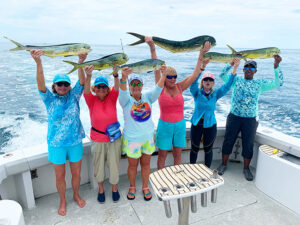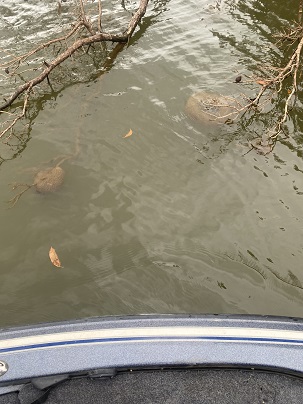BROSDAHL ON SPRINGTIME PANFISH

Brian “Bro” Brosdahl shares strategies for hunting early-season open-water bluegills, crappies, and perch
from St Croix Rods
Like big, saucer-shaped panfish? If so, you’re kith and kin to Max, Minnesota’s most-famous resident, Brian “Bro” Brosdahl. The prolific fishing guide with a penchant for all things panfish has been on the leading edge of bluegill, crappie, and perch-fishing techniques and innovations for well over two decades now.
While Bro pursues panfish year-‘round, he gets particularly giddy come ice out. “Wintertime sticks around for a long time in Northern Minnesota,” the St. Croix pro says. “While you’ve always got something going on beneath the ice, most northern anglers I know are eager to make the switch to open-water fishing as soon as the ice goes out.” And for good reason. Bro says the months of April, May, and June bring some of the best panfishing conditions and opportunities of the entire year.

“Of course you’ve got the unique aspects of the spawn – perch and crappies first and then the ‘gills – but those details aside, the common denominator for springtime panfishing is shallow water,” Bro advises. “It’s the first water to warm, so it’s where the weeds get growing and where concentrations of bait begin to get active. As a result, it’s where the panfish want to be, too.”
Bro says he spends ample time covering warming, shallow-water flats by casting micro jigs early in the season. “I’m looking for any weed growth,” he says. “The fish I’m hunting are often scattered in less than six feet of water. I’m usually searching with a Northland Thumper Jig or a Fire-Fly Jig tipped with a wax worm or a small crappie minnow.” Bro says he rigs with eight-pound Sunline green braid with a four-pound fluoro leader. His rod of choice is a 7’ light power, extra-fast action St. Croix spinning rod.
“Anglers familiar with St. Croix’s Panfish Series and Legend Elite Panfish Series rods know how good the 70LXF models are at bombing light jigs on light line, but they may not yet be familiar with the 70LXF model in the new Avid Series Panfish lineup (ASPS70LXF),” Bro posits. “This take on the most-versatile length, power, and action panfish rod ever made features a lighter and stronger new SCIII+ carbon blank, plus an all-new Seaguide Delta TYG guide train… they’re slightly triangular in shape, which seems stranger than the Thursday-night karaoke crowd at the bar down the street from my house… until you cast them. I’m casting the light jigs I use 20% to 25% farther on these new TYG-equipped Avid Panfish rods, which is a huge benefit when you’re searching spooky fish in shallow, clear water that’s largely devoid of weeds.”
Bro says fish pushing shallow into warmer water are generally just following bottom contours wherever the conditions suit them. That’s why he uses the sonar tools at his disposal to find them. “You can pull up on a springtime panfish flat and easily spook fish if you don’t know where they’re at,” he says. I’ll use my Talon shallow-water anchor instead of my trolling motor to minimize the disruption.”
To expedite the search, Bro employs a one-two punch of Humminbird 360 and Mega Live sonar. “I’ll scan with the 360 to locate the communities, then investigate each school more closely with Mega Live see if the fish have any size,” he says. “The Mega Live is attached to Ultrex trolling motor, so it’s a drop-it-and-go deal. It helps me to home in on the bigger individuals avoid the small ones.” Bro says 360 also greatly helps in understanding the shape of the weedlines, plus any cribs or brush piles he encounters. “I keep the grid visible on my screen so I know how far to cast, which is very important with any kind of forward viewing,” he says. “It’s fun to watch the fish react to the bait when the water warms. They get very aggressive and competitive which is great news for the angler. I’ve noticed the fish following the lure usually misses out and isn’t the one that ends up hitting the jig. It’s also a great tool for keeping your jig or hooked panfish away from pike.”
Once Bro finds the size and concentrations of fish he’s after, he’ll go to a shorter 6’4” Avid Panfish rod (ASPS64LF) with a tiny jig presented beneath a slip bobber. “I’ll use six-pound mono with a four-pound fluoro leader and a Northland Lite Bite slip bobber,” Bro reports. “If you get hung up, you want your leader to break instead of your main line so you can get back in the game that much faster. I like the Lite Bite bobbers because they are slightly weighted with a brass grommet so you don’t need any other weight on your leader. That really reduces tangles and other frustrations when casting this rig,“ he says.
Before there’s any significant weed growth in the shallows, Bro often follows beaver activity to panfish nirvana. “I often do better on beaver chew – the loose branches floating around – than on the dams themselves,” he says. “I’m looking hard at anything significant enough to provide some cover. Of course, the deeper runways leading to the dams hold fish and the dams do, too. They’re just a bit trickier to fish because the fish are often tucked up all the way into the dam.”
Once green weeds start to sprout on the shallow flats, Bro says the crappies, bluegills and perch spread out a bit and become a bit less spooky, especially when there’s some wave action. “ Once the water warms up a bit the fish move closer to the surface,” Bro says. “Lakes with patches of rushes or cane in three-to-six feet of water become hot. That’s when I become a crane operator,” says Bro, referring to the use of the 9’ model in St. Croix’s Avid Panfish, Panfish, and Legend Elite Panfish series. “I can pitch and even drop vertically into the openings in the rushes,” he says. “Even though they may still be rotten from the winter, they’re still strong enough to break your line. A long rod allows me to drop into the voids and pluck and pull ‘gills, crappies, and perch straight up so I can fight them on the surface to avoid tangles and break-offs.” Bro says Fire-Fly feather jigs in pink/white, greens, black/yellow bring him consistent results when “craning”, adding that small plastics work great, too, as do ice fishing lures like a Bro Mudbug tipped with waxies.
Bro says once the weeds really start growing, they represent the best options for finding mature, springtime panfish. “Invasive milfoil grows really quickly in the springtime, and once it’s up the fish never really leave it,” he says. “It can be difficult to fish, but it’s easiest when it’s only up about three to four feet off the bottom. I like a shorter rod like the 5’6” Legend Elite Panfish of the 6’ Avid Panfish when jigging in the weeds. I’m often fishing vertically right in the sonar cone so I can watch what’s happening. The fish aren’t scared down there in that thick stuff, but subtle presentations still rule. I’m just moving my rod tip with micro-movements.”
Wherever you’re located, the coming weeks and months represent prime panfishing. Follow Bro’s advice, try some of his favored panfish techniques, and make sure you’re geared up with rods that give you the upper hand on the water. All-new Avid Series Panfish rods consist of nine technique-minded spinning models in angler-preferred lengths, powers and actions to support today’s evolving panfish presentations that demand fast, accurate, sensitive, and forgiving tips, as well as a firm backbone. Pitch and swim, dipping, jigging and swimming microplastics, under spins, bobber rigging, micro-crankbaits, dock shooting and more; all are supported by Avid Series Panfish via advanced St. Croix design, vertical manufacturing, and precise and prideful handcraftsmanship on US soil. Models range from 6’ to 9’ in length with ultralight to medium-light powers and fast to extra-fast actions. Prices start at $200 with a 15-year warranty.








